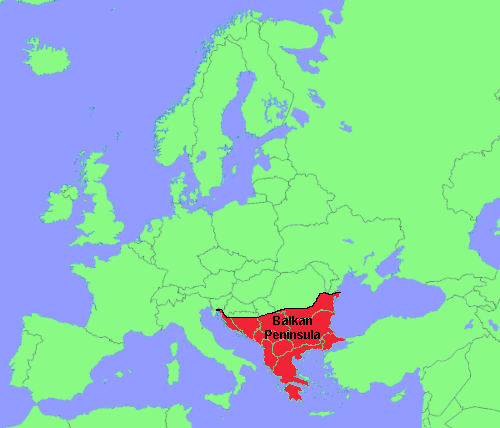
Circle the area on this map

C. While all of these empires ruled all or parts of the region, the word “balkan” was first used to refer to a mountain range by the Ottoman Turks who conquered the region in the 14th and 15th centuries. They had replaced the Byzantine Empire which took over the area from earlier Roman conquerors.
D. The 11 countries are Albania, Bosnia and Herzegovina, Bulgaria, Croatia, Greece, Kosovo, Montenegro, North Macedonia, Serbia, Romania, and Turkey. The term Balkanization has been used to describe the fragmentation of a region or county because of differences in ethnicity, culture, or religion.
A. Albania dates back to the 13th century as a separate country. It was not included in the 1918 creation of Yugoslavia after World War I.
B. The legacy of Byzantine rule made Eastern Orthodoxy the majority religion in the region, while Ottoman rule left a substantial Muslim population. Croatia and Slovenia, once part of the Austro-Hungarian Empire, are majority Roman Catholic. There are very, very few Protestants in the region.